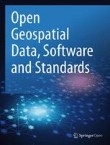Significant changes have taken place over the past few years in remote sensing technology. Quantity, quality and diversity of sensors have increased exponentially and so have related data. Open source software packages capable of processing digital imagery have improved in terms of number of available programs, implemented algorithms, and stability. Internet speed increases by 50% every year (Nielsen’s Law), and this fact, along with a growing awareness of the importance of collaboration and sharing through open access to data, has boosted the public availability of remote sensing datasets.
The trends outlined above indicate that the remote sensing science community has easier access to data which are growing exponentially in terms of volume, velocity and variety. Every part of Earth’s surface has been - and will be - covered frequently by numerous active and passive imaging sensors, which differ in resolution (spatial, spectral and radiometric), in revisit time and in the sensing mode (passive, active). The above characteristics can lead to consider a “big data” approach to image analysis in some cases.
For decades, the open source community has provided tremendous contributions to remote sensing in terms of tools and solutions which has led to support and inspiration to research, development and end-users. The evolution in open access of data and tools and the corresponding advantages in science for Earth observation has motivated this special issue, whose objective is to report on past, current and future scenarios regarding the “open” parts of the remote sensing analysis process, from data acquisition, analysis to a final deliverable.
Guest Editors
Dr. Francesco Pirotti, University of Padova, Italy (francesco.pirotti@unipd.it)
Dr. Markus Neteler, mundialis GmbH & Co. KG, Bonn, Germany (neteler@mundialis.de)
Dr. Duccio Rocchini, Fondazione Edmund Mach, Italy (duccio.rocchini@fmach.it)
